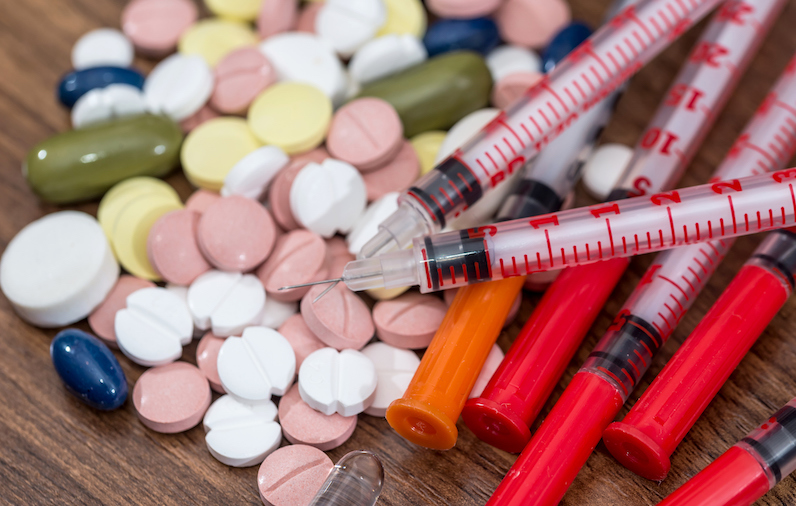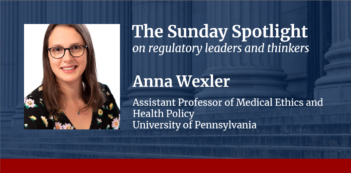
As the United States struggles with opioid addiction, litigation rages over medically supervised consumption facilities.
Opioid overdoses took the lives of 907 Philadelphians in 2016—a number three times the city’s homicide rate. Philadelphia has suffered from the opioid crisis more than any other large city in the United States. In response to the devastating consequences of opioid addiction, a Pennsylvania nonprofit corporation, Safehouse, plans to open the first safe injection site in the nation. But the legality of its operations under U.S. drug regulations has been contested.
At safe injection sites, people can bring their own illegal drugs and use them under medical supervision with access to sterile equipment, drug test strips, and overdose reversal services. Medical and public health staff do not provide or administer any illicit substances at the facility. Using a harm reduction model, safe injection sites offer access to medication-assisted treatment, general medical services, social services, and counseling on substance use, while seeking to minimize the negative impact of drug use on individuals and their communities.
Despite evidence that safe injection sites are effective as a medical and public health model for combatting addiction and overdose, William M. McSwain, the U.S. Attorney for the Eastern District of Pennsylvania, in which Philadelphia sits, filed a civil lawsuit, the first of its kind in the United States, against Safehouse, asking the court to declare that Safehouse’s planned operations are illegal under federal law.
At issue in the case was the interpretation of Section 856 of the Controlled Substances Act of 1970 (CSA), which makes it unlawful for anyone to maintain a property for the use of controlled substances.
The U.S. Congress originally enacted the CSA as part of President Richard Nixon’s war on drugs, which increased federal law enforcement efforts in controlling illicit substance distribution and use. The U.S. Drug Enforcement Administration and the U.S. Food and Drug Administration regulate substances according to the CSA’s framework, which classifies drugs into “schedules” based on their level of danger, abuse rate, and use in the medical field. Drugs with high addictive potential and no legitimate medical use, such as heroin, are the most strictly regulated under the schedule structure.
Congress later added Section 856 to the CSA during the cocaine epidemic in the 1980s in an attempt to target places where cocaine and other drugs were being manufactured and used. Section 856 states that it is illegal to “knowingly and intentionally…make available for use, with or without compensation, the place for the purpose of unlawfully…using a controlled substance.”
In September, the parties in United States v. Safehouse delivered arguments to a federal judge who reportedly said of Safehouse, “The issue before me is not whether it’s good for public health. My job is to apply this statute to the facts.”
McSwain claimed that Safehouse’s operations would violate Congress’s “carefully balanced regulatory scheme” under the CSA. Although the prosecutor recognized that Safehouse would provide many essential services to address substance use, he emphasized that any service must be legal.
The prosecutor stated that Safehouse’s proposed operations of consumption rooms facilitate illicit drug use, which is the exact activity Section 856 seeks to regulate. In addition to violating Section 856, McSwain contended that Safehouse’s establishment and operations of a safe injection site would enable individuals to break the law by providing a space for consumption of heroin and fentanyl, both of which are scheduled substances under the CSA.
Although Safehouse would focus its efforts on saving lives, McSwain asserted that Safehouse’s humanitarian purpose does not excuse it from complying with the regulations under the CSA since Section 856 covers a broad range of entities and focuses on the conduct of the entity rather than its mission or whether the entity is operating for profit.
Safehouse disagreed with the government’s interpretation of Section 856. In a response filed with the court, Safehouse claimed that the proposed safe injection site would not violate federal law because the legislative intent of Section 856 was to forbid individuals from knowingly profiting off of the manufacturing, distribution, and use of controlled substances on their property.
When the statute is considered in the context of when Congress created it—that is, during the increase of for-profit crack houses in the 1980s—the historical circumstances reveal that Congress did not enact Section 856 with any intent to prohibit a public health intervention, argued Safehouse. Since the purpose of the organization is to provide health care and overdose prevention services, rather than to profit from illicit substance use and sales, Safehouse claimed that the CSA would not regulate its operations as a medical and public health facility.
In contrast to the government’s claim that safe injection sites would normalize illegal drug use, Safehouse asserted that medically supervised consumption would advance federal law and policy.
By linking legal harm reduction measures already endorsed by the U.S. Department of Health and Human Services and the Centers for Disease Control and Prevention, such as access to sterile injection equipment and Naloxone, a drug often used in treating opioid overdoses, under one comprehensive model, Safehouse maintains that overdose prevention sites would provide lifesaving services in compliance with the regulations in Section 856 of the CSA.
The federal judge agreed with Safehouse.
Ruling that Safehouse’s proposed operations are not illegal, the judge reasoned that “Safehouse plans to make a place available for the purposes of reducing the harm of drug use, administering medical care, encouraging drug treatment, and connecting participants with social services. None of these purposes can be understood as a purpose to facilitate drug use.”
But the legal battle is far from over. In response to the ruling, McSwain declared that he will continue to litigate the case to block Safehouse from opening. The outcome in this case will play a pivotal role in shaping how cities across the United States combat the opioid crisis.



